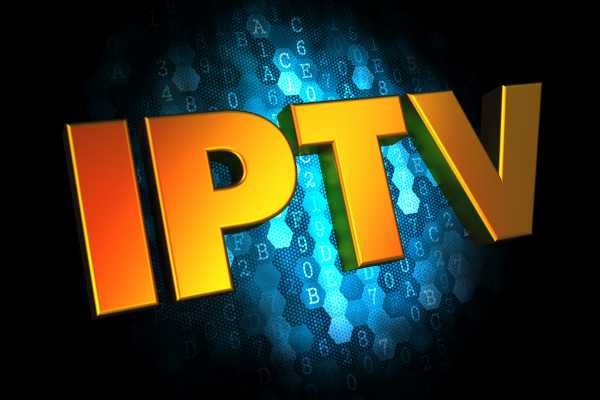Revolution in Digital Media: What is IPTV and should you choose one?

If you’re not a follower of media news and innovations, you may not know that it is possible to have all TV providers in one place. All channels, live TV you can think of, and videos on demand (VOD) at your fingertips. A solution that connects everything and wrapping it all at one price, saving you loads of money. Often more cash than you think. And it is all in ultra HD.
There’s a good chance you haven’t heard of IPTV. But you’ve probably been using it for years. And you’ll likely be using it more in the near future. We wrote this article to explain to you how it works and provide you with educated information on the pros and cons.
IPTV is a fast-growing industry. Experts estimate the market value will double in size by 2029. As we speak, new providers and services are popping up alongside traditional TV providers with more IPTV offerings beating traditional well-known companies. But what is IPTV? What does IPTV stand for? How does it work? And how can you use it to improve your TV-watching experience? We’re here to walk you through all you need to know, starting with the basics.
What is IPTV?
IPTV stands for “Internet Protocol Television”. It sounds futuristic and complicated, right? But it is very simple and straightforward. IPTV is just a way to deliver or receive television or video content by viewers via the internet. Just to compare, we have traditional ways such as cable or satellite. If you are using streaming services such as NETFLIX or AMAZON PRIME, it’s the same idea, but TV instead of movies. Some providers such as FoxWorld TV go even further and provide you with TV and Streaming Services all in one place. The difference between traditional non-IPTV and IPTV is how your service provider delivers the content to you. In the case of non-IPTV, content is transmitted by light pulses in fibre-optic cable or radio waves from a satellite. On the other hand, IPTV service providers deliver the same content to you through your broadband internet connection. Very simple.
Why Do People Choose Internet Protocol Television?
If you can watch the same content, just through a different delivery solution, why would you choose IPTV? The most significant reason many people go for IPTV is increased flexibility and price. An example is IPTVFoxWorld, just check their package prices. Let’s take a closer look at 5 different ways this flexibility makes it better.
Flexibility On When You Watch
With cable or satellite TV, broadcasters send out signals only in real-time, and viewers receive them. That means you’re only able to watch what’s being broadcast live at the moment. Unless you have some recording device, you don’t get to dictate what’s on and when. You just tune in when you can and watch what’s available now. Most IPTV providers use video on demand (VOD) or time-shifted media (we’ll discuss these soon). So, with IPTV, you can still watch your favourite TV show through a live broadcast. But you can also let your provider know what you want to watch, and they’ll send it to you immediately—even after the live broadcast is done. Conclusion? Say bye to a rigid TV schedule and needing to remember to program your digital video recorder to catch what you missed.
Flexibility How You Watch
With IPTV, you don’t have to stay glued to your TV screen as your favourite show airs live. On top of that, you don’t have to stay glued to your TV screen at all. That’s because IPTV apps let you watch shows on different devices. That means you can load up any show on your device, smartphone, or laptop and follow along. Even some more forward-thinking cable providers let you do this via an app. But it isn’t a given.
Flexibility With The Network
The “IP” in Internet Protocol Television is the same as the one in your IP address or VoIP. In an IPTV context, all that means is a service provider is using the internet protocol to communicate its television programming. IP networks offer far more flexibility within the network, enabling two-way interactivity compared to the traditional, one-way cable connectivity or satellite broadcast network. As the end-user, this allows you to have more controls and options to interact and personalize your experience.
Flexibility With Content
Cable providers usually have their own single offer, on the other hand, IPTV providers combine those offers bringing you your ultimate TV hub with live TV or on-demand and video streaming customizable the way you want. What does it mean for a customer? One subscription one place money saved in the pocket and flexibility when you watch and how you watch.
Price Price Price
A lot of new IPTV providers beat themselves with prices, so you can get a package that includes Netflix Apple Amazon Holo HBO and others in one deal. This turns your TV into the ultimate TV hub where you can watch anything at any time for a price that wasn’t available ever before. IPTV FoxWorld is one of them and it’s worth having a look at.
Do You Need a Set-Top Box for IPTV?
Yes and no. Let me explain. If you have an older TV, it may not be suitable for IPTV. In such cases, you may need a set-top box like Apple TV, ROKU or Amazon Fire TV. (These set-top boxes “translate” what you receive over your internet connection into a format your TV can read). But many providers now go for apps that operate with m3u System that doesn’t require any box. You just install an app on your smart TV, log in, and you are ready to watch. Your computer, on the other hand, doesn’t need anything to watch IPTV. Once you sign up for a service, you can use it to livestream whatever you want in any of the IPTV formats (which we’ll discuss next). If you can mirror your computer screen to your TV, you can watch IPTV without a set-top box. New Smart TVs also can come with built-in IP support that can be connected to your network and set up to use IPTV services.
Hybrid IPTV
Many TV providers are now adopting a hybrid approach to IPTV to solve some of the issues with fully IP-enabled broadcasts. IPTV requires a great deal of bandwidth to transmit a ton of data at high speed. Hybrid IPTV combines traditional TV services with IP-based ones. The biggest selling point is that it’s all delivered through a single box. This allows TV providers to expand their offerings to their subscribers. It also makes it easier to roll out new products and services without completely overwhelming the set-top box. In short, it’s a good way to transition from a traditional model to a more modern one.
How Does IPTV Work?
There are three different IPTV formats. We will take a look at each one individually.
Video On Demand – simply (VOD)
VOD streaming is exactly what it sounds like—you get video whenever you demand it. Movie-streaming sites are VOD services. There’s no time limit on what you can watch (other than what the service currently has the rights for). You tell the service what you want to watch, they send it to you via the Internet, and you watch it. Simple.
VOD examples:
Time-Shifted Media
If you’ve watched “catch-up TV,” you’re familiar with this type of IPTV. Many broadcast networks now allow users to watch shows they missed when convenient. The important difference between time-shifted media and VOD is that the content being shared has a limited shelf life. You can’t go back and watch an episode of a show that you missed several years ago. Well, you could, but it would be VOD, then. (If you think VOD and time-shifted media sound very similar, you’re right. It mostly depends on how long you can watch a show after it airs.) Time-shifted media example: One of the most popular services that offer time-shifted media is BBC’s iPlayer.
Live IPTV
Like broadcast TV, you can also watch shows live on IPTV. Many people watch sporting events this way. That’s because it’s easy to stream a game on your phone while on the go. Besides being broadcast over the internet instead of through traditional cable TV media, live IPTV is pretty much the same as regular TV.
Live IPTV examples: FOX Sports Go, CBS Sports HQ, FoxWorld, Hulu Live TV, and Sling TV all offer live IPTV.
IPTV Services
While IPTV is getting bigger, it’s still a niche market. Services like Netflix, Hulu, and FoxWorld offer a lot of TV shows when they can get the rights to them. And video on demand is also in amazing speed.
It’s the other formats of IPTV, where there’s a huge potential for changing how the world watches TV, that have yet to take off. Catch-up TV is becoming more popular. Downloading apps for providers like FOX, CBS, and NBC let viewers see the shows that they missed. And that’s without the effort it takes to set up and record something via a set-top box like a TiVo.
NOW TV, TVPlayer, and Epicstream are all making headway into the live IPTV market. But they’re still not as mainstream as more popular VOD services.
How IPTV Services Have Grown
Sports seems to be the area of TV that’s most quickly embraced IPTV. There are plenty of subscription sports packages you can watch from your computer or stream to your TV whenever you want.
We can also see this in WWE’s landmark deal with Netflix. After over 30 years, WWE’s flagship show, RAW (which currently airs on the USA Network), soon will move away from traditional cable broadcasting.
Netflix isn’t set to broadcast RAW until January 2025, and it’s hard to predict the real outcome of its first venture into the live-streaming world. But, the deal shows some potential for adding live TV broadcasts together with VOD platforms and for IPTV, in general. And it may be a safe bet that the rest of the live television world will be right behind if the deal works well.
Many platforms are also popping up that allow users to create their own VOD and live-streaming services, FoxWorld is leading the race. That way, people can share their skills, advice, and passions with anyone else in the world.
The Future of IPTV
It’s difficult to tell how many people right now are using IPTV services. With the wide variety of providers as we have, different formats, and a huge amount of pirated content available, there are many things to keep track of.
But there’s no doubt that IPTV will be increasing in popularity. Mordor Intelligence estimates that the whole market will be worth over $105 billion by 2029, really? That’s over double the 2024 market size of $44 billion. As we speak, Grand View Research estimates the IPTV market size will grow to over $67 billion by 2027. Interesting…
According to Grand View research:
“The growth of OTT services and the IPTV business is being supported by the rise in digitalization and the increased use of mobile devices by people.”
Grand View also estimates that subscription-based IPTV will grow quicker than ever over the next decade, suggesting that services like TVPlayer FoxWorld and Hulu Live TV will gain popularity.
Some of that growth has started already.
Major media providers like FoxWorld Media and others plan to offer new streaming services to compete with Netflix, Amazon Prime, and other streaming heavyweights. And more traditional TV providers allow for time-shifted media via their apps. Now even cable providers let their users watch from their phones.
Now that people can easily create their own channels to distribute their content, the amount and variety of IPTV options will be increasing quicker than ever. Viewers won’t be limited to what broadcasters are sharing anymore. They can go to each other to see everything from fitness videos to audience-specific movies.
We can tell, the future of TV is IPTV.










